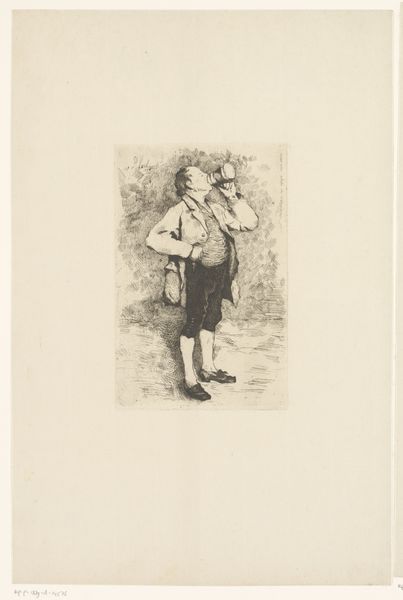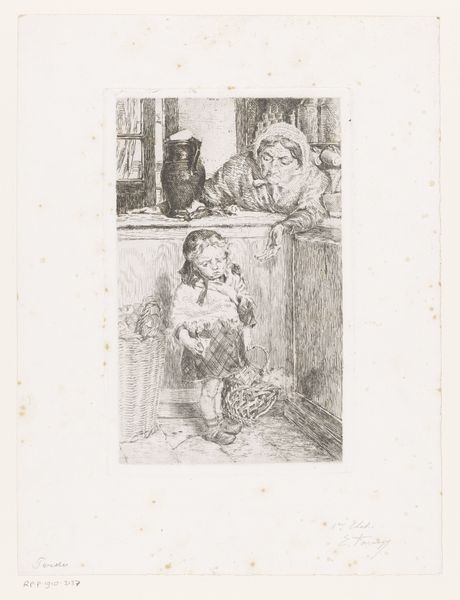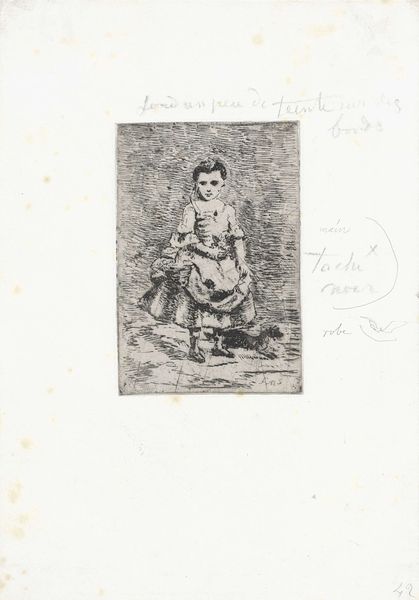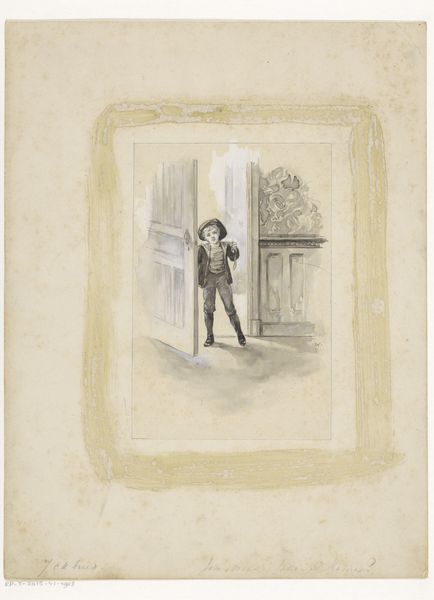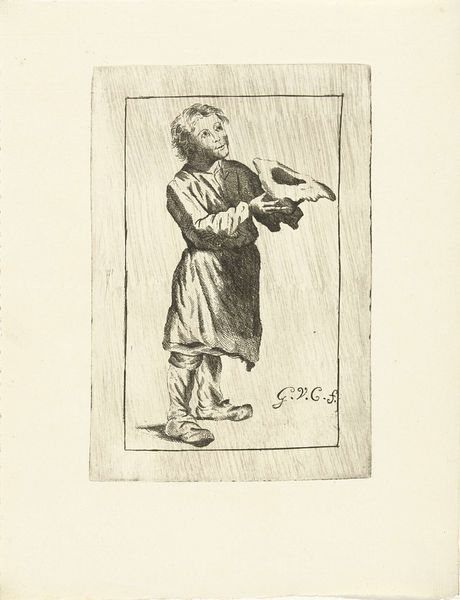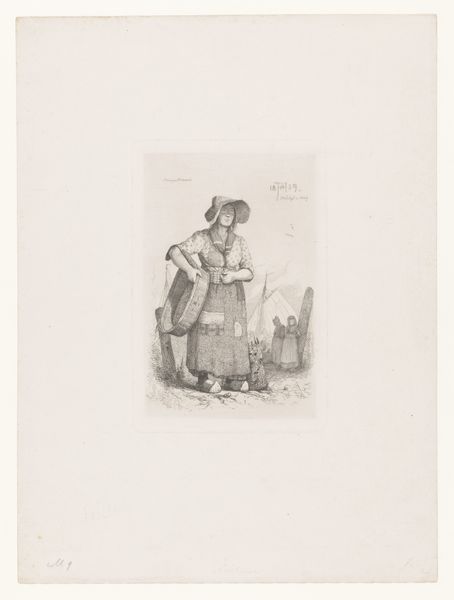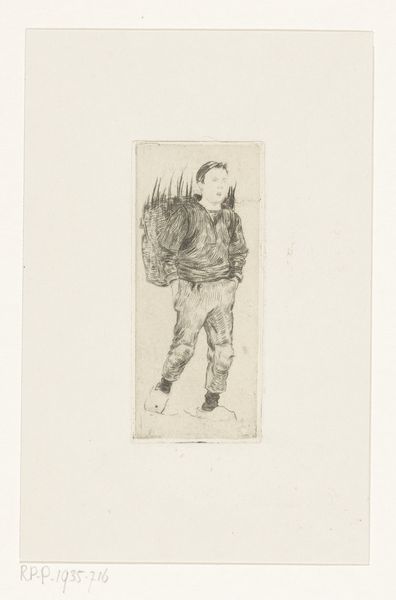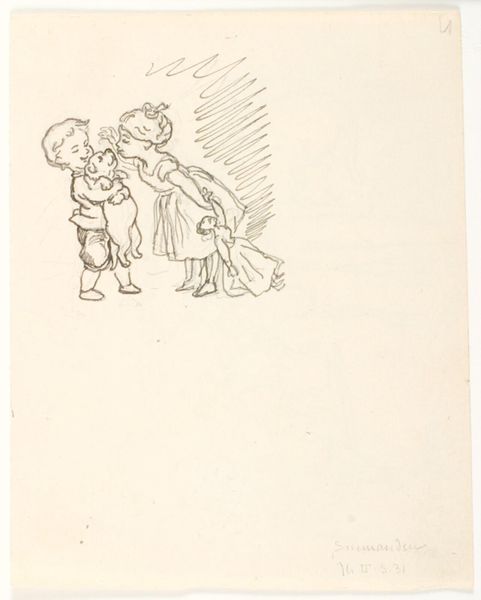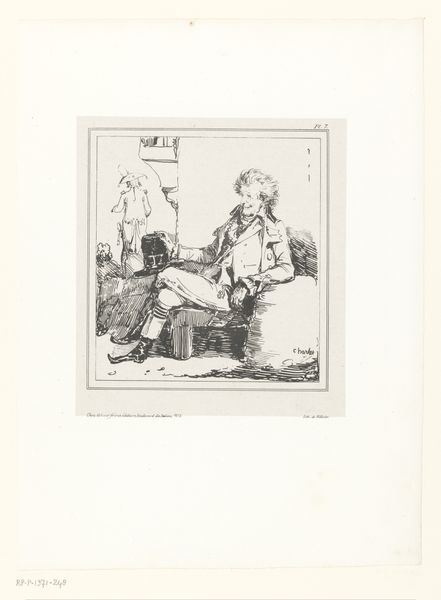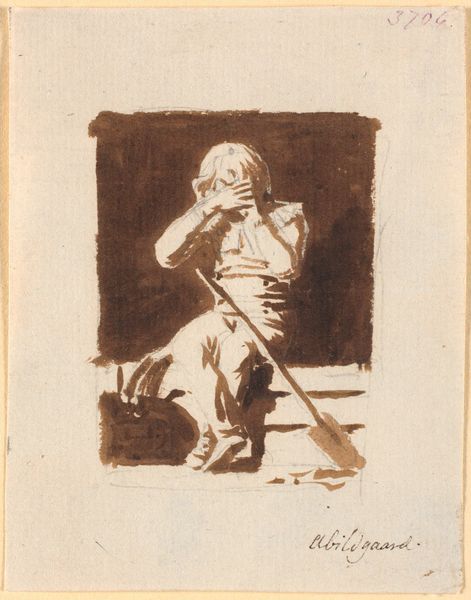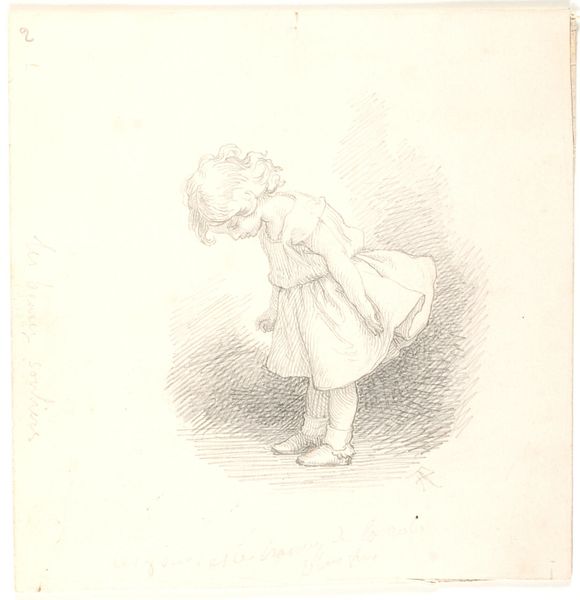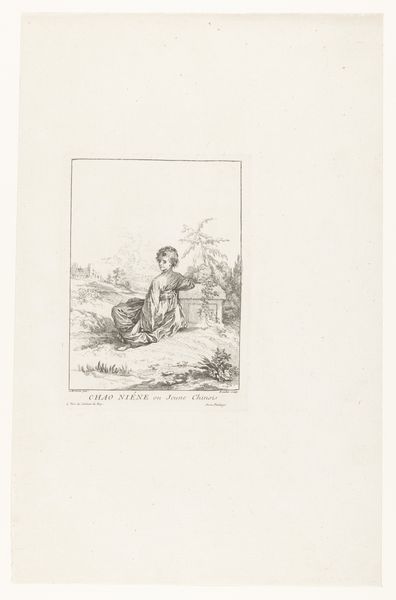
drawing, ink
#
portrait
#
drawing
#
ink
#
pen-ink sketch
#
genre-painting
Dimensions: 110 mm (height) x 105 mm (width) (bladmaal)
Curator: Welcome. Today, we are looking at a drawing by Lorenz Frølich titled "Boy Reading a Book," created in 1866. It's currently held at the SMK, the National Gallery of Denmark. Editor: There's a curious lightness to this image. The sparse use of ink against all that bare paper gives a delicate, almost ethereal quality. The figure seems to float. Curator: Frølich was a noted illustrator, and this pen-ink sketch reflects his narrative sensibility. Consider the rising literacy rates of the mid-19th century and how that impacts our interpretation of this young reader. It reflects the expanding possibilities for common boys and girls. Editor: Absolutely. And speaking of materials, ink wasn’t simply a given then; its production and accessibility are indicative of expanding education. Look how simply, how economically, the image is rendered. There is an immediacy because the medium itself could be deployed readily and swiftly. Curator: True. Ink drawings allowed for efficient reproduction for illustrations within mass media and books, greatly increasing their availability. Frølich’s image may point to the commodification of knowledge and learning as a cultural phenomenon. Editor: Furthermore, one can imagine the feel of the pen and the quality of the ink that produced the tonality in the cross-hatching. Was it a simple nib, perhaps manufactured, or was it more bespoke? It must have felt quite different to produce then what we expect from paper and ink today. Curator: Perhaps. The image becomes a quiet statement on cultural aspirations as the book itself becomes both an object and a tool for social and personal advancement. Frølich has created a humble picture here. Editor: I agree that it is humble, even in its production. As viewers, it brings to the fore our awareness of both learning and its means of creation, simultaneously. Curator: Indeed, it prompts consideration of reading’s wider socio-cultural significance during the nineteenth century. Thank you for that astute reminder. Editor: Thank you; considering material certainly casts fresh light.
Comments
No comments
Be the first to comment and join the conversation on the ultimate creative platform.
